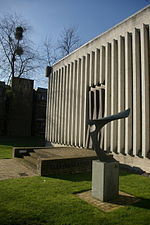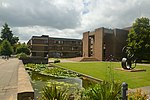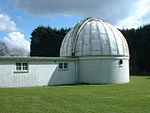Ascension Parish Burial Ground

The Ascension Parish Burial Ground, formerly known as the burial ground for the parish of St Giles and St Peter's, is a cemetery off Huntingdon Road in Cambridge, England. Many notable University of Cambridge academics are buried there, including three Nobel Prize winners. Although a Church of England site, the cemetery includes the graves of many non-conformists, reflecting the demographics of the parish in the 19th and 20th centuries, which covered much of West Cambridge.It was established in 1857 while the city of Cambridge was undergoing rapid expansion, although the first burial was not until 1869. It covers one and a half acres and contains 1,500 graves with 2,500 burials. Originally surrounded by open fields, it is now bounded by trees and the gardens of detached houses, and is a designated city wildlife site.In 2020 it was formally closed to new burials by an Order in Council, and responsibility for its upkeep was transferred to Cambridge City Council.The former chapel of rest is now used as the workshop of letter-carver Eric Marland.
Excerpt from the Wikipedia article Ascension Parish Burial Ground (License: CC BY-SA 3.0, Authors, Images).Ascension Parish Burial Ground
All Souls Lane, Cambridge Eddington
Geographical coordinates (GPS) Address Nearby Places Show on map
Geographical coordinates (GPS)
| Latitude | Longitude |
|---|---|
| N 52.2176 ° | E 0.1001 ° |
Address
All Souls Lane 8
CB3 0EA Cambridge, Eddington
England, United Kingdom
Open on Google Maps







